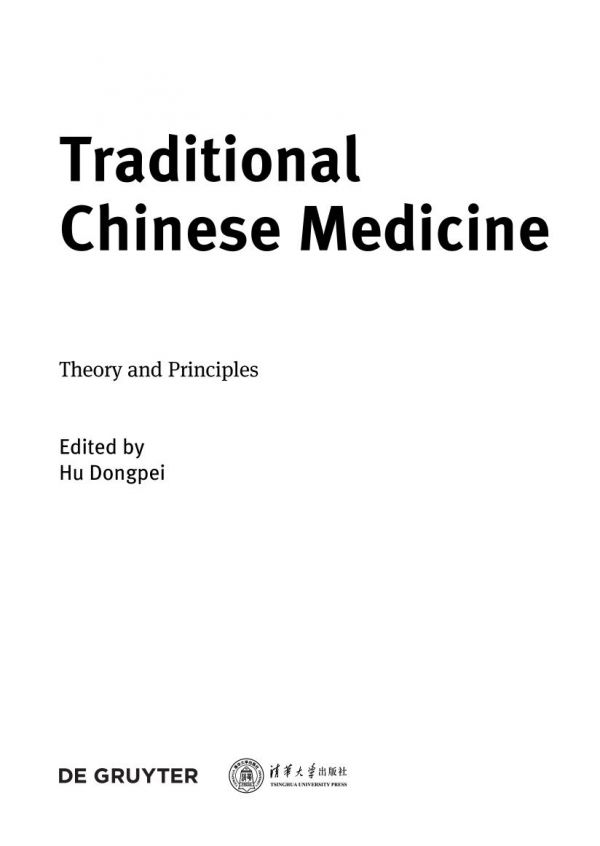

Most ebook files are in PDF format, so you can easily read them using various software such as Foxit Reader or directly on the Google Chrome browser.
Some ebook files are released by publishers in other formats such as .awz, .mobi, .epub, .fb2, etc. You may need to install specific software to read these formats on mobile/PC, such as Calibre.
Please read the tutorial at this link. https://ebooknice.com/page/post?id=faq
We offer FREE conversion to the popular formats you request; however, this may take some time. Therefore, right after payment, please email us, and we will try to provide the service as quickly as possible.
For some exceptional file formats or broken links (if any), please refrain from opening any disputes. Instead, email us first, and we will try to assist within a maximum of 6 hours.
EbookNice Team

Status:
Available4.5
18 reviews
ISBN 10: 3110417804
ISBN 13: 9783110417807
Author: Dongpei Hu
1 Introduction
1.1 the discipline, nature, and properties of traditional Chinese medicine
1.1.1 tcm is characterized by its natural science nature
1.1.2 tcm has the characteristics of social science
1.1.3 the mutual influences of tcm and ancient Chinese philosophy
1.1.4 tcm is a product of multidisciplinary interactions
1.2 the main characteristics of tcm theory
1.2.1 concept of holism
1.2.2 differential diagnosis and treatment
2 The Philosophical Basis of Traditional Chinese Medicine
2.1 theory of yin-yang
2.1.1 the basic concept of yin-yang
2.1.2 the basic contents of yin-yang theory
2.1.3 the applicable examples in traditional Chinese medicine of the yin-yang theory
2.2 five elements theory
2.2.1 fundamental concepts and characters of the five elements
2.2.2 the classification of the five elements
2.2.3 the cycle of generation, restriction, over-restriction, and counter-restriction in five elements
2.2.4 the application of five elements theory in tcm
3 Visceral Manifestation
3.1 summarization of visceral manifestations
3.2 five zang-organs
3.2.1 heart
3.2.2 lung
3.2.3 spleen
3.2.4 liver
3.2.5 kidney
3.3 six fu-organs
3.3.1 gallbladder
3.3.2 stomach
3.3.3 small intestine
3.3.4 large intestine
3.3.5 urinary bladder
3.3.6 triple-jiao
3.4 extraordinary fu-organs
3.4.1 brain
3.4.2 uterus
3.5 the relationships among the zang-organs and fu-organs
3.5.1 the relationships among the six fu-organs
3.5.2 the relationship between the five zang-organs and six fu-organs
4 The Theory of Qi, Blood, and Body Fluids
4.1 qi
4.1.1 concept of qi
4.1.2 production of qi
4.1.3 movement of qi
4.1.4 functions of qi
4.1.5 classification of qi
4.2 blood
4.2.1 concept of blood
4.2.2 production of blood
4.2.3 functions of blood
4.2.4 blood circulation
4.3 body fluids
4.3.1 concept of body fluids
4.3.2 metabolism of body fluids
4.3.3 function of body fluids
4.4 the relationships among qi, blood, and body fluids
4.4.1 the relationship between qi and blood
4.4.2 the relationship between qi and body fluids
4.4.3 the relationship between blood and body fluids
5 Theory of Meridians and Collaterals
5.1 overview of the theory of the meridians and collaterals
5.1.1 the concept of the meridians and collaterals
5.1.2 composition of the meridian
5.2 twelve meridians
5.2.1 nomination of 12 meridians
5.2.2 route and connection of the 12 meridians
5.2.3 distribution of the 12 meridians
5.2.4 exterior–interior relationship
5.2.5 circulating sequence of the 12 meridians
5.2.6 travelling routes of the 12 meridians
5.3 eight extra meridians
5.3.1 concept and functions of eight extra meridians
5.3.2 distribution and physiological functions of the eight extra meridians
5.4 physiological functions and applications of the meridians
5.4.1 physiological functions of the meridian
5.4.2 application of the theory of the meridian
6 Constitutional Theory
6.1 concept of constitutional theory
6.1.1 basic concept of constitution
6.1.2 signs and characteristics of constitution
6.2 factors affecting constitution
6.2.1 relationship of the constitution to viscera, meridians, essence, qi, blood, and body fluids
6.2.2 factors which affect the constitution
6.3 classification of constitution
6.3.1 balance constitution
6.3.2 yang-inclined constitution
6.3.3 yin-inclined constitution
6.4 application of the constitution theory
6.4.1 explanation of the susceptibility of individual to certain pathogens
6.4.2 illustrating the etiology
6.4.3 explaining the pathological changes
6.4.4 guiding syndrome differentiation
6.4.5 guiding treatment
6.4.6 guiding the health maintenance
7 Onset of Disease
7.1 concepts of pathogenesis
7.2 cardinal principle of disease onset
7.2.1 deficiency of vital qi is the intrinsic factor for the pathogenesis
7.2.2 pathogenic qi is an important factor to cause the disease
7.2.3 struggle between pathogenic and vital qi determines the progress and prognosis of disease
8 Etiology
8.1 exogenous pathogens
8.1.1 six evils
8.1.2 pestilential pathogens
8.2 endogenous pathogens
8.2.1 internal injury due to mental disorders
8.2.2 injury due to improper diet
8.2.3 injury due to overstrain and over-idleness
8.3 pathogens from pathological products
8.3.1 water-dampness, phlegm, and retained fluid
8.3.2 blood stasis
8.3.3 calculus
8.4 other pathogens
8.4.1 medicine abuse
8.4.2 iatrogenic pathogen
origin of traditional chinese medicine
what are the 8 principles of traditional chinese medicine
what are the 6 traditional chinese medicine techniques
what are the three primary methods of traditional chinese healing
traditional chinese medicine yin and yang
Tags: Dongpei Hu, Chinese Medicine, Traditional